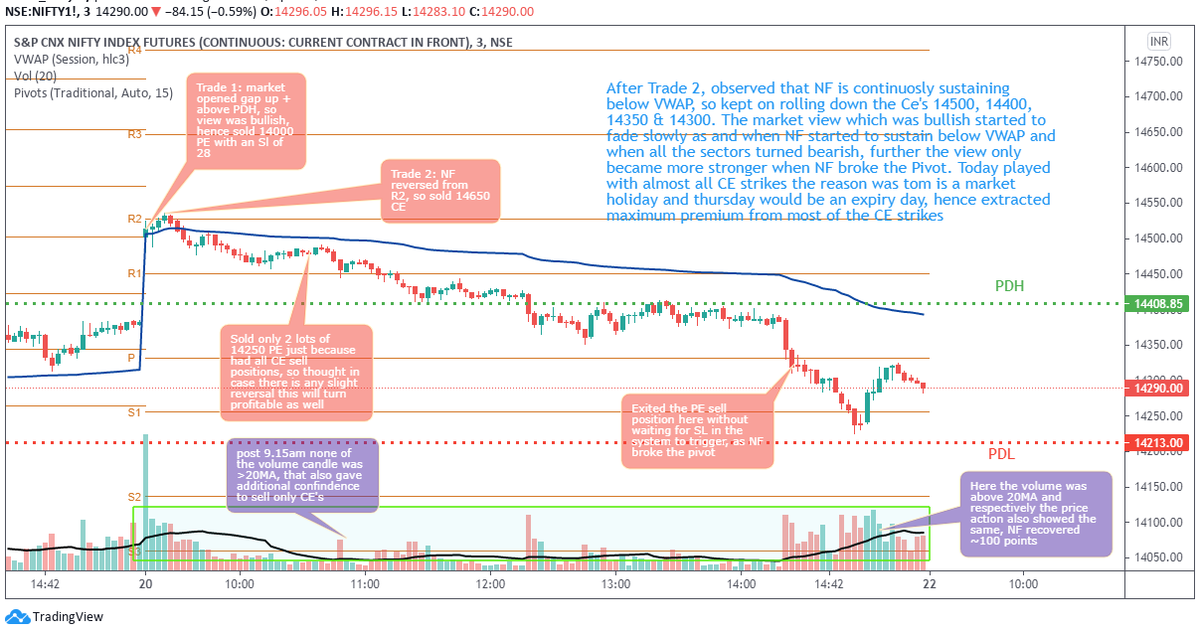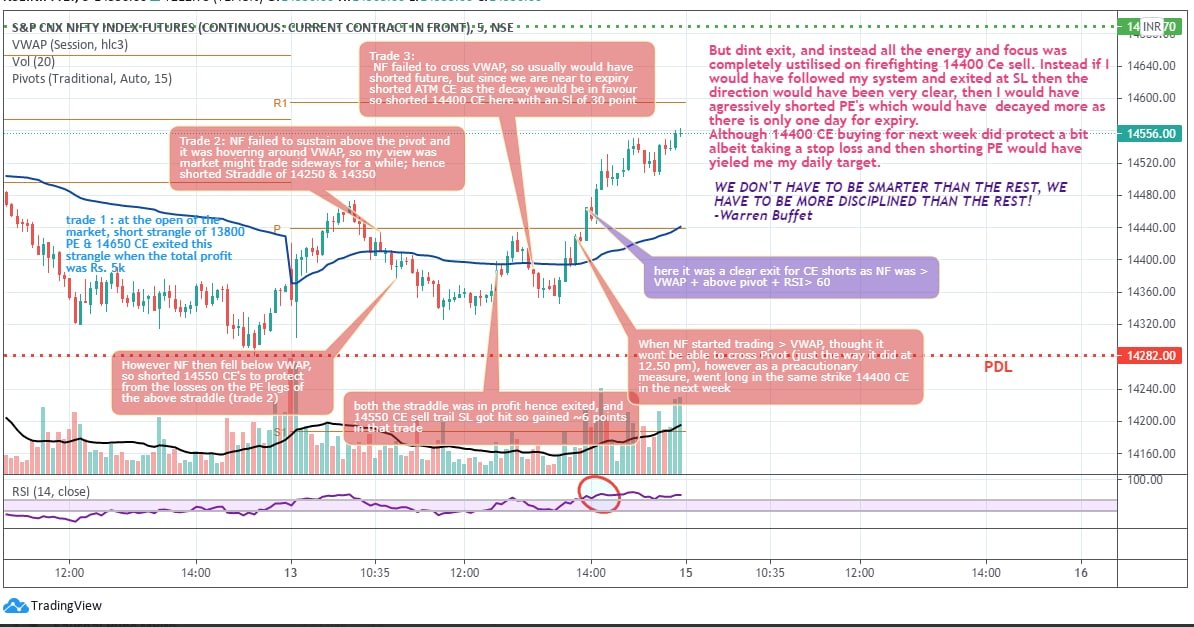More from itrade(DJ)
For your understanding https://t.co/U89feuPEhC


Today morning I was bullish looking at SGX Nifty. The first put I sold was 14000 PE.
— itrade(DJ) (@ITRADE191) April 20, 2021
After that market took resistance at R2, then I changed my view. Sold 14650 CE and then even uptill 14300 CE. pic.twitter.com/Bo4La6kJRe
More from Optionslearnings
Detailed thread on how @niki_poojary & I managed our positions on Thursday and got a big profit via straddles.
Many people were asking us in the comments, how we managed.
Explained transparently what we did.
Hope you get something to learn from this. 😀👍
Many people were asking us in the comments, how we managed.
Explained transparently what we did.
Hope you get something to learn from this. 😀👍
Sep 23, 2021 - Weekly expiry, preceded by the FOMC meet and not to mention the gap up which then turned out to be a trending day
— Nikita Poojary (@niki_poojary) September 25, 2021
Here\u2019s how the strangles were converted into straddles & how the positions were managed!
Time for a Thread \U0001f9f5
You May Also Like
A brief analysis and comparison of the CSS for Twitter's PWA vs Twitter's legacy desktop website. The difference is dramatic and I'll touch on some reasons why.
Legacy site *downloads* ~630 KB CSS per theme and writing direction.
6,769 rules
9,252 selectors
16.7k declarations
3,370 unique declarations
44 media queries
36 unique colors
50 unique background colors
46 unique font sizes
39 unique z-indices
https://t.co/qyl4Bt1i5x

PWA *incrementally generates* ~30 KB CSS that handles all themes and writing directions.
735 rules
740 selectors
757 declarations
730 unique declarations
0 media queries
11 unique colors
32 unique background colors
15 unique font sizes
7 unique z-indices
https://t.co/w7oNG5KUkJ

The legacy site's CSS is what happens when hundreds of people directly write CSS over many years. Specificity wars, redundancy, a house of cards that can't be fixed. The result is extremely inefficient and error-prone styling that punishes users and developers.
The PWA's CSS is generated on-demand by a JS framework that manages styles and outputs "atomic CSS". The framework can enforce strict constraints and perform optimisations, which is why the CSS is so much smaller and safer. Style conflicts and unbounded CSS growth are avoided.
Legacy site *downloads* ~630 KB CSS per theme and writing direction.
6,769 rules
9,252 selectors
16.7k declarations
3,370 unique declarations
44 media queries
36 unique colors
50 unique background colors
46 unique font sizes
39 unique z-indices
https://t.co/qyl4Bt1i5x

PWA *incrementally generates* ~30 KB CSS that handles all themes and writing directions.
735 rules
740 selectors
757 declarations
730 unique declarations
0 media queries
11 unique colors
32 unique background colors
15 unique font sizes
7 unique z-indices
https://t.co/w7oNG5KUkJ

The legacy site's CSS is what happens when hundreds of people directly write CSS over many years. Specificity wars, redundancy, a house of cards that can't be fixed. The result is extremely inefficient and error-prone styling that punishes users and developers.
The PWA's CSS is generated on-demand by a JS framework that manages styles and outputs "atomic CSS". The framework can enforce strict constraints and perform optimisations, which is why the CSS is so much smaller and safer. Style conflicts and unbounded CSS growth are avoided.


















